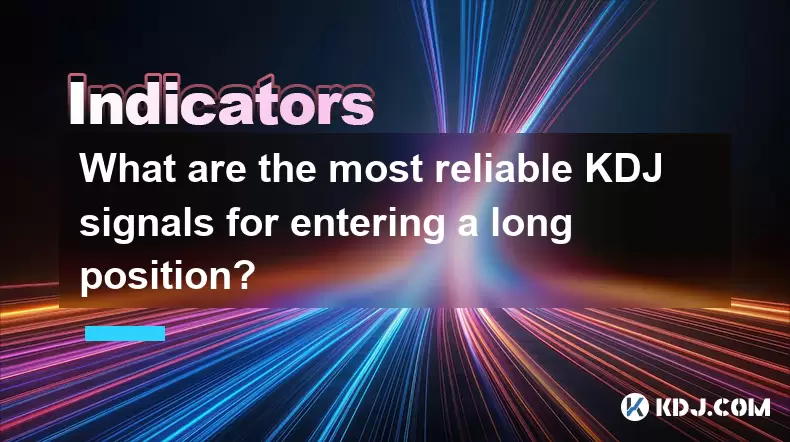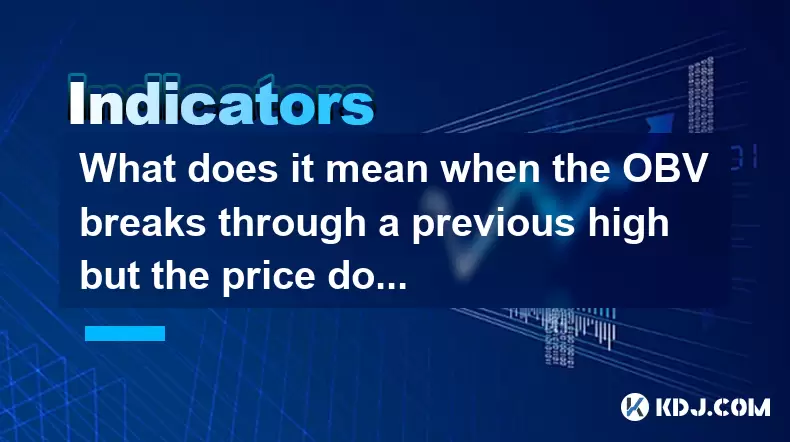-
 Bitcoin
Bitcoin $116700
0.24% -
 Ethereum
Ethereum $3973
4.34% -
 XRP
XRP $3.283
7.68% -
 Tether USDt
Tether USDt $1.000
0.01% -
 BNB
BNB $789.8
2.27% -
 Solana
Solana $176.2
3.31% -
 USDC
USDC $0.9999
0.00% -
 Dogecoin
Dogecoin $0.2238
5.14% -
 TRON
TRON $0.3389
-0.51% -
 Cardano
Cardano $0.7907
4.03% -
 Stellar
Stellar $0.4527
10.02% -
 Hyperliquid
Hyperliquid $41.07
4.27% -
 Sui
Sui $3.794
1.77% -
 Chainlink
Chainlink $19.49
10.40% -
 Bitcoin Cash
Bitcoin Cash $580.9
0.74% -
 Hedera
Hedera $0.2617
4.32% -
 Avalanche
Avalanche $23.41
3.67% -
 Ethena USDe
Ethena USDe $1.001
-0.03% -
 Litecoin
Litecoin $122.4
1.38% -
 Toncoin
Toncoin $3.364
1.49% -
 UNUS SED LEO
UNUS SED LEO $8.988
0.37% -
 Shiba Inu
Shiba Inu $0.00001295
2.82% -
 Uniswap
Uniswap $10.62
5.75% -
 Polkadot
Polkadot $3.922
4.46% -
 Dai
Dai $1.000
0.01% -
 Bitget Token
Bitget Token $4.494
2.15% -
 Monero
Monero $268.0
-1.30% -
 Cronos
Cronos $0.1523
3.68% -
 Pepe
Pepe $0.00001127
4.43% -
 Aave
Aave $285.4
4.85%
What are the most reliable KDJ signals for entering a long position?
The KDJ indicator helps crypto traders spot long entry signals through bullish crossovers, divergence, and J-line rebounds, especially when confirmed by volume and trend alignment.
Aug 08, 2025 at 10:01 pm

Understanding the KDJ Indicator in Cryptocurrency Trading
The KDJ indicator is a momentum oscillator widely used in cryptocurrency trading to identify potential reversal points and overbought or oversold conditions. It is derived from the Stochastic Oscillator but includes a smoothing mechanism known as the J line, which makes it more sensitive to price changes. The indicator consists of three lines: %K (fast stochastic), %D (slow stochastic), and %J (the divergence line). Each of these lines operates within a 0 to 100 range. When analyzing entry signals for a long position, traders focus on crossovers, divergence, and extreme values. The most reliable signals emerge when multiple conditions align, reducing false positives common in volatile crypto markets.
Signal 1: Bullish Crossover in Oversold Territory
One of the most trusted KDJ signals for entering a long position occurs when the %K line crosses above the %D line while both are below the 20 level, indicating an oversold market. This crossover suggests that downward momentum is weakening and upward pressure may soon take over. To confirm this signal:
- Ensure the %K and %D lines are both below 20, confirming the asset is oversold.
- Wait for the %K line to cross upward through the %D line, forming a bullish crossover.
- Verify that the J line is also rising from below 0 or near 0, adding confirmation of momentum shift.
- Cross-check with volume indicators to ensure increasing buying volume supports the move.
This signal works particularly well in ranging or consolidating markets. In trending markets, it's essential to align this signal with the broader trend direction to avoid counter-trend entries.
Signal 2: Bullish Divergence Between Price and KDJ
Bullish divergence is another high-probability signal for long entries. It occurs when the price makes a lower low, but the KDJ indicator forms a higher low, indicating weakening bearish momentum. This discrepancy suggests that despite the price decline, selling pressure is decreasing.
To identify and act on this signal:
- Observe the price chart and mark recent swing lows.
- Simultaneously examine the KDJ chart and locate corresponding lows in the %K or %D lines.
- Confirm that the second low in KDJ is higher than the first, even as price reaches a new low.
- Look for the J line to turn upward from an oversold region (below 20 or even 0).
- Enter the long position when the %K line crosses above %D within the divergence zone.
This signal is especially effective on 4-hour or daily timeframes, where noise is reduced and institutional activity is more visible. It's recommended to combine this with support level analysis to increase accuracy.
Signal 3: J Line Rebound from Extreme Low Levels
The J line is the most volatile of the three KDJ components and often acts as an early warning system. When the J line drops below 0 or even into negative territory (common in crypto due to high volatility), it indicates extreme oversold conditions. A subsequent rebound of the J line from these levels can signal the start of a strong upward move.
Steps to utilize this signal:
- Monitor the J line dropping below 0, which is more extreme than the standard 20 oversold level.
- Wait for the J line to begin rising, ideally crossing back above 0.
- Confirm that the %K and %D lines are also turning upward.
- Enter a long position when the price breaks above a recent minor resistance or candlestick reversal pattern appears (e.g., bullish engulfing).
- Place a stop-loss just below the recent price low to manage risk.
This signal is particularly useful in high-volatility altcoins where sharp corrections are common. However, it should not be used in isolation—correlation with RSI or MACD can help filter false signals.
Signal 4: KDJ Crossover Aligned with Moving Averages
A more robust long entry signal emerges when the KDJ bullish crossover coincides with the price trading above key moving averages such as the 50-period or 200-period EMA. This alignment confirms that the short-term momentum shift is occurring within a broader uptrend.
To execute this strategy:
- Plot the 50 EMA and 200 EMA on the price chart.
- Ensure the current price is above both moving averages, indicating a bullish trend.
- Wait for the %K line to cross above %D in the oversold zone (below 20).
- Confirm that the J line is rising from below 20.
- Enter the trade when the next candle opens above the crossover candle’s high.
This confluence reduces the risk of entering during a bear market bounce. It is especially effective on BTC/USDT or ETH/USDT pairs, where trends are more sustained.
Signal 5: Multi-Timeframe Confirmation of KDJ Buy Signal
Reliability increases significantly when the same KDJ signal appears across multiple timeframes. For example, a bullish crossover on the 1-hour chart confirmed by a similar setup on the 4-hour chart adds strong validity.
Procedure for multi-timeframe analysis:
- Start with the higher timeframe (e.g., 4H) and identify if the KDJ is forming a bullish crossover or divergence.
- Switch to the lower timeframe (e.g., 1H) and wait for the same signal to appear.
- Only enter the long position when both timeframes show alignment.
- Use the higher timeframe J line behavior as a filter—avoid entries if it’s still declining.
- Set take-profit levels based on the higher timeframe resistance zones.
This method prevents impulsive entries during minor retracements and ensures trades are in sync with broader market structure.
Frequently Asked Questions
What is the ideal KDJ setting for cryptocurrency trading?
The default setting of (9, 3, 3) is widely used, but due to crypto’s volatility, many traders adjust it to (14, 3, 3) for smoother signals. Shorter periods like (5, 3, 3) may work for scalping but increase false signals. Testing on historical data for specific assets is recommended.
Can KDJ be used alone for long entries?
While KDJ provides strong signals, using it in isolation increases risk. Combining it with volume analysis, support/resistance levels, or trend indicators like MACD improves accuracy. In crypto, where pumps and dumps are common, confirmation from multiple sources is essential.
How do you avoid fake signals in sideways markets?
In ranging markets, KDJ can generate frequent crossovers. To reduce false entries, only act on signals near clear support or resistance zones. Also, avoid trading crossovers that occur in the middle of the 20–80 range—focus on those emerging from extreme levels.
Is KDJ more effective on certain cryptocurrencies?
KDJ tends to perform better on high-liquidity pairs like BTC and ETH, where price movements are less manipulative. Low-cap altcoins with erratic price action may produce unreliable KDJ readings. Always assess the asset’s volatility and trading volume before relying on the indicator.
Disclaimer:info@kdj.com
The information provided is not trading advice. kdj.com does not assume any responsibility for any investments made based on the information provided in this article. Cryptocurrencies are highly volatile and it is highly recommended that you invest with caution after thorough research!
If you believe that the content used on this website infringes your copyright, please contact us immediately (info@kdj.com) and we will delete it promptly.
- Navigating the Crypto Market in 2025: Smart Decisions for the Meme Supercycle
- 2025-08-09 08:50:12
- DeFi, Tokenized Stocks, and NFTs: A Wild Ride in the Crypto Cosmos
- 2025-08-09 08:30:11
- AERO Price Skyrockets: Aerodrome Finance Sees Massive Surge Amid Coinbase Buzz
- 2025-08-09 08:55:19
- Coinbase, Cosmos, and dYdX: Navigating the Crypto Currents
- 2025-08-09 06:30:16
- BNB Price, Altcoins, and Predictions: What's the Buzz?
- 2025-08-09 06:30:16
- Crypto Presale Projects Primed for Gains in 2025: A New Yorker's Take
- 2025-08-09 06:50:15
Related knowledge

What does it mean when the Williams' oscillator repeatedly hits bottoms but fails to rebound?
Aug 09,2025 at 09:28am
Understanding the Williams %R OscillatorThe Williams %R oscillator, developed by Larry Williams, is a momentum indicator used in technical analysis to...

When the J line in the KDJ indicator suddenly turns downward after being continuously overbought, does it indicate a top?
Aug 09,2025 at 06:35am
Understanding the KDJ Indicator and Its ComponentsThe KDJ indicator is a momentum oscillator widely used in cryptocurrency technical analysis to ident...

What does it mean when the TRIX indicator suddenly diverges downward after a long period of convergence?
Aug 09,2025 at 12:56am
Understanding the TRIX Indicator in Cryptocurrency TradingThe TRIX indicator, or Triple Exponential Average, is a momentum oscillator used in technica...

What does it mean when the OBV breaks through a previous high but the price doesn't reach a new high?
Aug 09,2025 at 07:57am
Understanding the On-Balance Volume (OBV) IndicatorThe On-Balance Volume (OBV) is a technical analysis indicator that uses volume flow to predict chan...

Why is the rise limited after a MACD bottoming divergence?
Aug 09,2025 at 12:07am
Understanding MACD Bottoming Divergence in Cryptocurrency TradingThe MACD (Moving Average Convergence Divergence) is a widely used technical indicator...

What does it mean when the OBV continues to rise but the price is trading sideways?
Aug 08,2025 at 10:35pm
Understanding On-Balance Volume (OBV)On-Balance Volume (OBV) is a technical indicator that uses volume flow to predict changes in stock or cryptocurre...

What does it mean when the Williams' oscillator repeatedly hits bottoms but fails to rebound?
Aug 09,2025 at 09:28am
Understanding the Williams %R OscillatorThe Williams %R oscillator, developed by Larry Williams, is a momentum indicator used in technical analysis to...

When the J line in the KDJ indicator suddenly turns downward after being continuously overbought, does it indicate a top?
Aug 09,2025 at 06:35am
Understanding the KDJ Indicator and Its ComponentsThe KDJ indicator is a momentum oscillator widely used in cryptocurrency technical analysis to ident...

What does it mean when the TRIX indicator suddenly diverges downward after a long period of convergence?
Aug 09,2025 at 12:56am
Understanding the TRIX Indicator in Cryptocurrency TradingThe TRIX indicator, or Triple Exponential Average, is a momentum oscillator used in technica...

What does it mean when the OBV breaks through a previous high but the price doesn't reach a new high?
Aug 09,2025 at 07:57am
Understanding the On-Balance Volume (OBV) IndicatorThe On-Balance Volume (OBV) is a technical analysis indicator that uses volume flow to predict chan...

Why is the rise limited after a MACD bottoming divergence?
Aug 09,2025 at 12:07am
Understanding MACD Bottoming Divergence in Cryptocurrency TradingThe MACD (Moving Average Convergence Divergence) is a widely used technical indicator...

What does it mean when the OBV continues to rise but the price is trading sideways?
Aug 08,2025 at 10:35pm
Understanding On-Balance Volume (OBV)On-Balance Volume (OBV) is a technical indicator that uses volume flow to predict changes in stock or cryptocurre...
See all articles

























































































